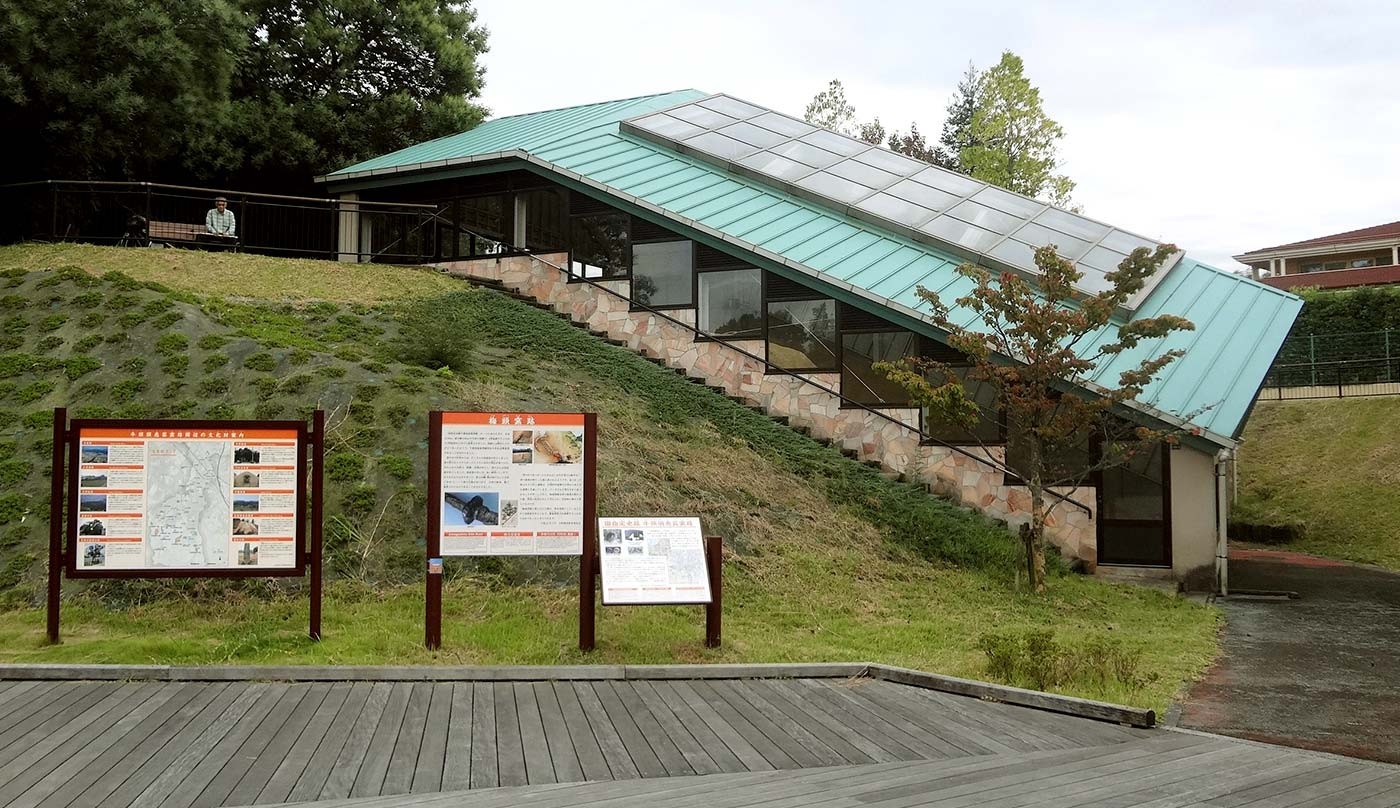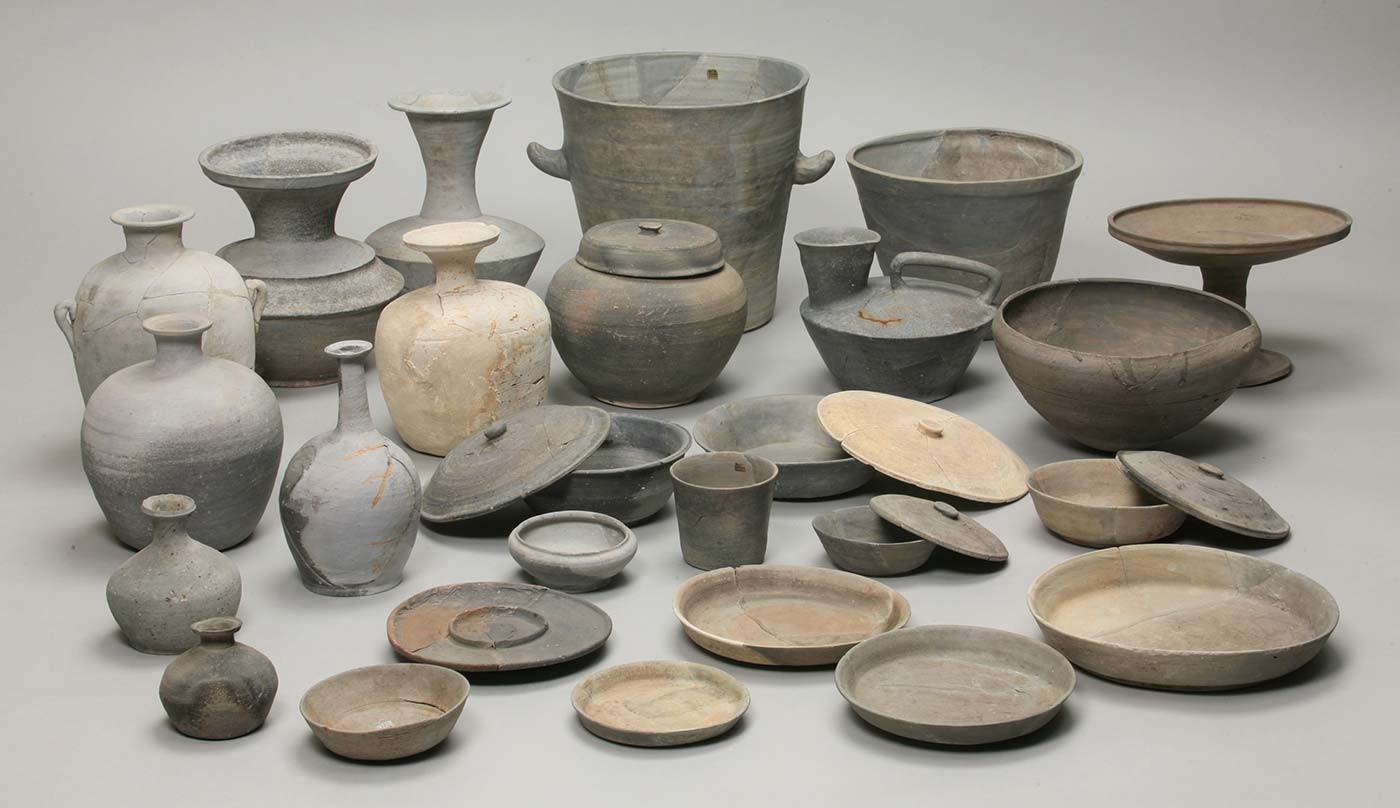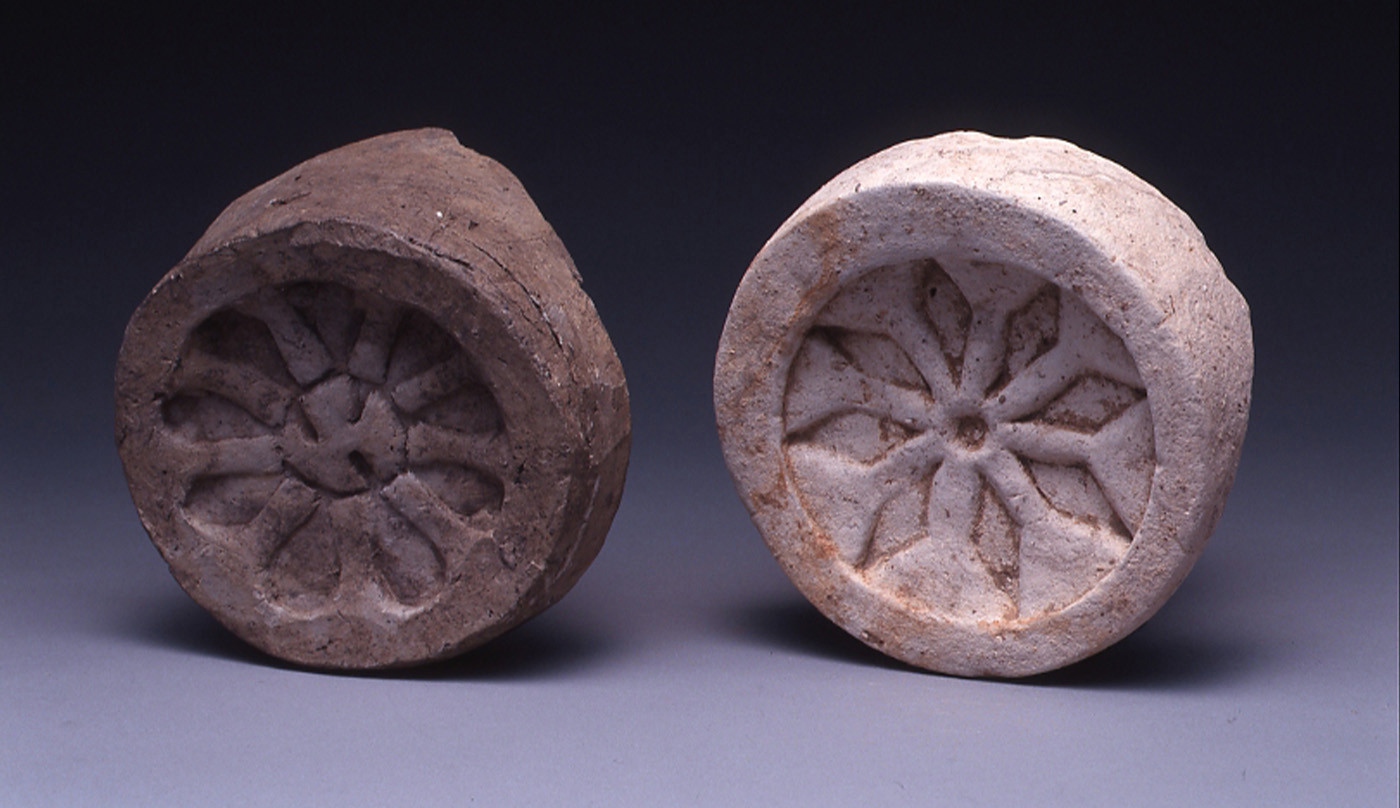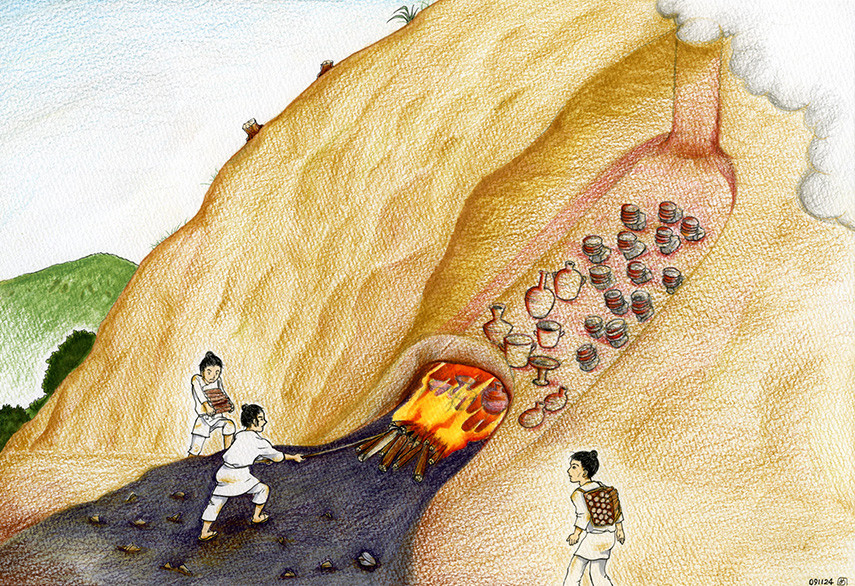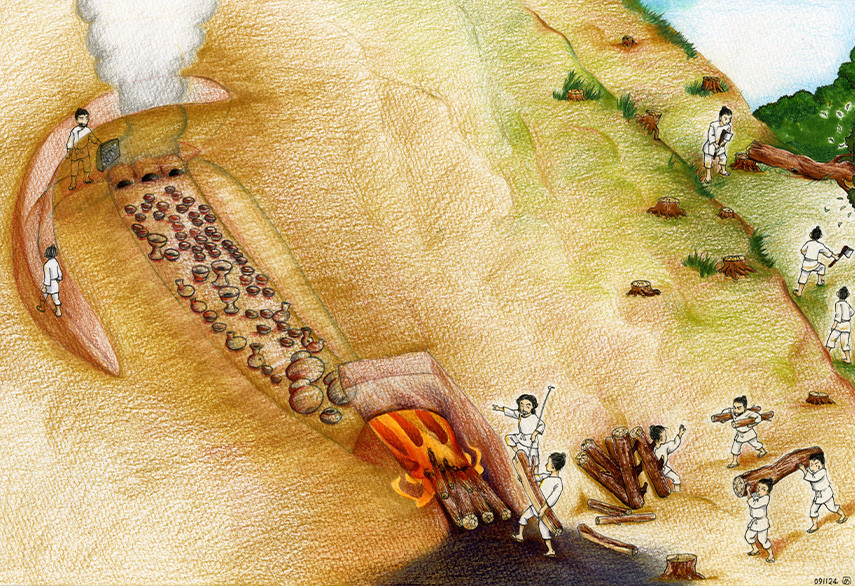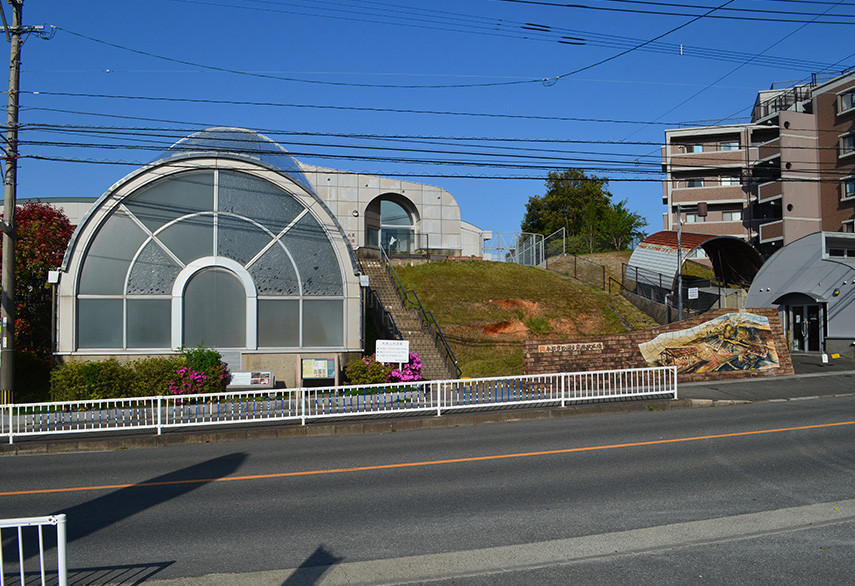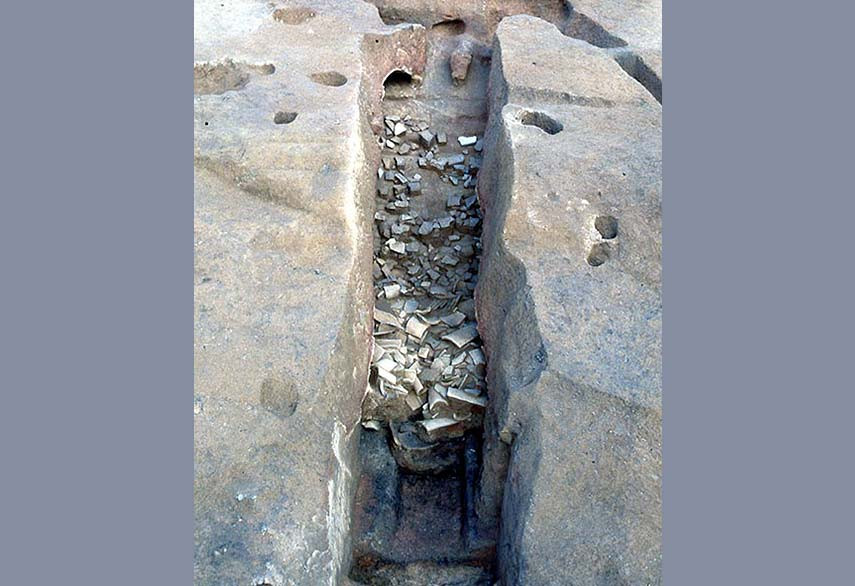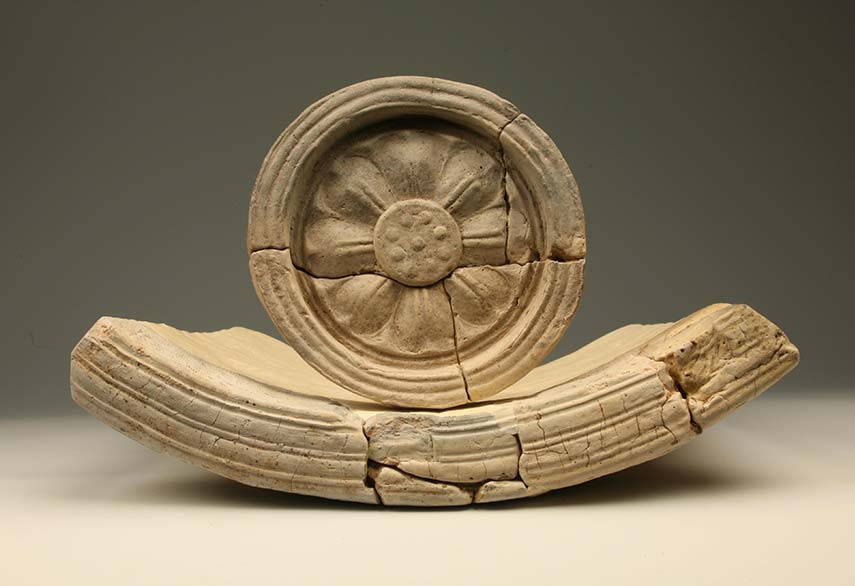
Ushikubi Sue Ware Kiln Ruins
| Location | City of Kasuga・City of Onojo・City of Dazaifu |
|---|---|
| Designation | 国史跡・Undesignated |
| Emblem | 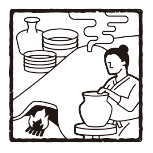 |
This was the largest Sue-ware pottery producing area in western Japan from the mid-6th century to the mid-9th century, with kilns mainly in the city of Onojo but extending to a wide area, including the cities of Kasuga and Dazaifu.
“Dazaifu tableware” was produced from the Nara period to the early Heian period, supporting the food culture at the time for everyone from officials to commoners.
The Ceramics Industry Zone That Supported the “Western Capital”
Sue-ware was not the only kind of pottery fired at the Ushikubi Sue Ware Kiln Ruins. Roof tiles were created from the end of the 6th century to the first half of the 7th century and taken to the Naka-Hie site, considered to be Nanotsu no Miyake, a governmental house described in the Nihon Shoki (“Chronicles of Japan”), where they decorated the roof of buildings used to welcome foreign envoys. Various kinds of inkstones were also produced starting at the end of the 7th century, including circular inkstones made in the 8th century that were used by Dazaifu officials, meaning these sites supported the administration of Dazaifu. Sue-ware, roof tiles, and more were fired in ascending kilns known as “Anagama”, which were built by digging tunnels into mountain slopes. The size and shape of the kilns changed over time, and it is believed that these changes were based on the type and size of the Sue-ware being produced. Ushikubi Sue Ware Kiln Ruins were the leader of Sue ware (a kind of pottery) production in Kyushu.
Utoguchi Tile Kiln Ruins, Where All Kinds of Tiles Were Fired
The Utoguchi Tile Kiln ruins are an ascending kiln for roof tiles operated in the latter half of the 7th century, and massive amounts of roof tiles have been unearthed from the two kiln ruins excavated. Many kinds of tiles were produced here—flat and cylindrical end-eave tiles used to decorate the edge of the eaves, ornamental ridge-end tiles decorating either side of the main building, demon tiles decorating the edge of the building, flat tiles, round tiles, and more--all with the purpose of building a full-fledged temple. Another characteristic of these tiles is that they share common patterns with those made in the Kinki area. The main body of Kiln No. 1 is roughly 14 meters long and 1.4 to 1.8 meters wide. The chamber where roof tiles were fired had a stair-shaped ground devised to fire large amounts of roof tiles efficiently. The flue that emits smoke is split into three parts, which is characteristic of the Ushikubi Kiln Ruins. Ditch-shaped passages for workers that connected the kilns along the mountain slope have also been found.

Onojo City Characters/Ono Joe
Kilns with perforated flues and multiple chimneys were also built at the Ushikubi Sue Ware Kiln Ruins from the end of the 6th century to the first half of the 7th century, a structure also seen in tile kilns on the Korean Peninsula. Kilns with the same structure as those built in the Munakata area of northern Fukuoka Prefecture from the latter half of the 7th century have also been observed. The shape of these kilns is a crucial clue to understanding where the workers who fired Sue ware pottery came from.
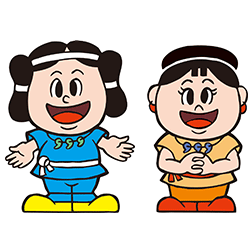
Kasuga City Characters/Kasuga-kun and Asuka-chan
The No. 1 Kiln, preserved and displayed at the Utoguchi Tile Kiln Exhibit Hall, is the oldest in Kyushu, and the only kiln of the Ushikubi Kilns (one of the top three ancient kilns) that can be toured. Pottery making classes are held at the hands-on activity area in the exhibit hall, meaning you can have fun trying your hand at pottery while reflecting on ancient pottery making after you tour the hall.
Pottery making classes are held once a month (excluding March, April, and August) (Fee required). For details, please contact the Nakoku-no-oka Historical Museum.
Access Information
Address
Umegashira Kiln Ruins:816-0955 5-17-1 Kamiori
Onojo, Fukuoka
Udoguchi Tile Kiln:816-0845 1-4 Shirouzugaoka, Kasuga
By Train
Umegashira Kiln Ruins:About 30 min on foot from JR Onojo Station
Udoguchi Tile Kiln:About 15 min on foot from JR Hakata-Minami Station
By Car
Umegashira Kiln Ruins:About 15 min from the Chikushino IC on the Kyushu Expressway
Udoguchi Tile Kiln:Take National Route 602

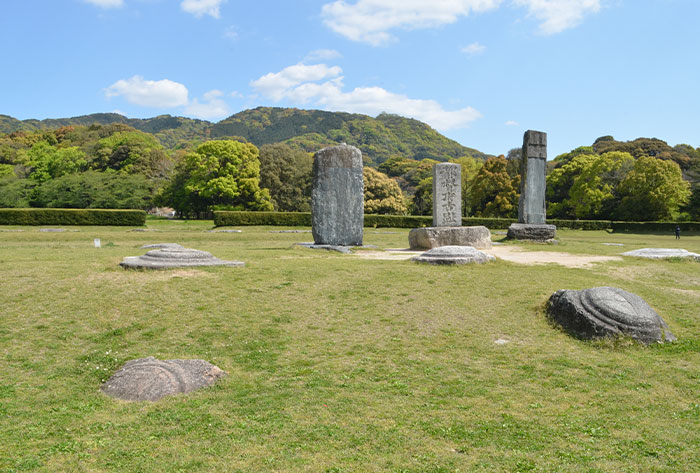
About the Western Capital
The “Western Capital”, created in Tsukushi 1300 years ago. Cultural assets speaking to the magnificence of this city of international exchange that flourished in East Asia are scattered across the cities of Chikushino, Kasuga, Onojo, Dazaifu, Nakagawa, and Umi in Fukuoka Prefecture as well as the town of Kiyama in Saga Prefecture.

